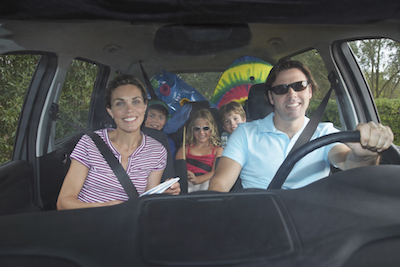Does your child get motion sickness? Here’s how to help.
Motion sickness is a common problem in pediatric medicine. Children, like adults, suffer from car-sickness or become sea-sick while boating. Experts estimate that one-third to two-thirds of people suffer from motion sickness. Motion sickness is almost twice as common in females as compared to males. Motion sickness is thought to be secondary to a sensory mismatch where the individual senses motion that is not happening in their environment. Typical symptoms include: nausea, sweating, vomiting and dizziness.
Prior to giving your child medication, try some simple steps to avoid motion sickness.
-
Let them eat prior to travel and even while traveling, but avoid heavy, greasy or strong-smelling foods.
-
Place them in a seat that allows the child to see out of a window.
-
Continue to keep the “air moving” in the vehicle. You may even give them their own fan.
-
Minimize the use of books and iPad/tablets during trips.
-
Encourage them to sit in an area of less motion (the middle of the boat) and to face forward.
-
Encourage them to focus on the horizon or fixed point
-
Do not allow them to use binoculars or cameras
Motion sickness medications
 There are four main motion sickness medications: dimenhydrinate, meclizine, transdermal scopolamine and ginger. These are the “generic” names for the various medications and are sold in a huge variety of brand names. To add to the confusion, all four medications are available by the brand name “Dramamine”.
There are four main motion sickness medications: dimenhydrinate, meclizine, transdermal scopolamine and ginger. These are the “generic” names for the various medications and are sold in a huge variety of brand names. To add to the confusion, all four medications are available by the brand name “Dramamine”.
Dimenhydrinate is known as “Classic Dramamine.” It is over-the-counter and safe for use in children 2 years old and up. It needs to be re-dosed every 6 to 8 hours. Side effects include dizziness, drowsiness, impaired coordination, headache, stomachache and dry mouth.
Meclizine is often referred to by the brand name Bonine or called “Less Drowsy Dramamine.” It is also over-the-counter, but it is only dosed once a day. While it has similar side effects as dimenhydrinate, these side effects (especially the drowsiness) occur less often. Unfortunately, meclizine is only approved for children 12 years old and up.
Transdermal scopolamine is a prescription patch. These patches are then worn behind an individual’s ear, and the medication is released transdermally (across the skin). A single patch can be worn for 3 days. Transdermal scopolamine is approved for children 12 years old and up. The side effect profile is identical to dimenhydrinate, but like meclizine thought to occur less often.
Ginger can also help with motion sickness. While there are numerous alternative medicine approaches to motion sickness, ginger has the best research to support its use. Most of the studies used 1 to 2 grams of ginger. Ginger does not seem to have as many side effects the “traditional” medications.
My motion sickness recommendations
Most car or boat rides can be addressed without need for medications. Certainly, short car rides around town are not “worthy” of medications. In practice, we find few if any children get sea sick on large cruise ships. For long road trips or off-shore fishing, some children will need medications. Ginger is a reasonable alternative to other medications, but often only available in capsules. For children 2 to 12 years old, dimenhydrinate is really their only choice. For people 12 years old and older, meclizine or transdermal scopolamine offer similar motion sickness protection with relatively less side effects.







